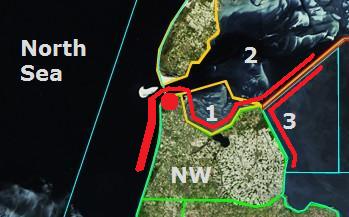
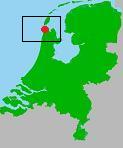
Relation with Lake (class): Former Lake Cemetery (FLC)
Total nr. of Allied casualties buried here (TC): 189 end WW2, today 0.
Lake casualties, initially, end WW2 (LC-I): 4
Unknown today: 24, all airmen & naval,
of which unknown from Lake (LC-U): 2
of which unknown from North Sea (NS-U): 20
Initial burial site in WW2: yes, Lake Cemetery West side of Lake (LCW)
Post war burial site for collection and reburial from other sites: no
Cemetery with Lake casualties today: no
HUISDUINEN (DEN HELDER) WAR CEMETERY
Den Helder was/is an important naval base on the tip of a peninsula. During WW2, Allied airmen washed-up on all sides. They were brought-in by boats or crashed in the area on a raid on Germany or Den Helder itself. To bury them the Catholic Cemetery in Huisduinen (a small village west of Den Helder) was extended with a military plot. The German Navy (Kriegsmarine) buried their own war dead there, but also 189 Allied servicemen. This was done with military honor throughout the war. Recovery areas were the Noordkop-Wieringen region (NW), North Sea and the 15km coastline, the tidal sandbanks of the Balgzand-Breehorn (1), the Wadden Sea (2), the first 20km along the closure-dam of the Old-Zuyder Sea, on both north- and south side. And a part of the Wieringermeerpolder-dike at Lake IJsselmeer (Old Zuyder Sea) (3).


Dutch name cemetery: Huisduinen RK begr. pl.
Full name: Huisduinen Roman Catholic Cemetery
Address (usable for car navigation):
Jan Verfailleweg 20, Huisduinen, Den Helder.
For reaction or comments; send us an email,
see address and info at CONTACT.
Please use as subject title: 'Huisduinen'.
North of Den Helder is the Frisian Island of Texel. Here also approx. 180 Allied airmen were buried. To the South of Den Helder, some 12 km (7,5 miles) down the coastline is the village of Callantsoog and on 20km south is Petten. Recovered airmen on the beach near these villages were sometimes buried locally, but for north of Callantsoog the designated cemetery was Huisduinen. More inland south-east are Wieringerwaard and Kolhorn cemeteries. Here lay victims of local crashes, no washed ashore airmen. East are two war grave sites on the former island of Wieringen.
The Huisduinen Cemetery was cleared between 1945 and 1949. Read here for some statistics on it.

HUISDUINEN TO BERGEN-OP-ZOOM
The Huisduinen cemetery was cleared after the war. The Commonwealth and Polish war dead, including all unidentified RAF men, were reburied in Bergen-op-Zoom in the CWGC centralization war cemetery.
Photo right: At Bergen-op-Zoom they kept the Huisduinen casualties together in the blue plots near the entrance, on rows 33, 31, 29, 30, 32 and 34 (outlined blue).
Six Canadian airmen were reburied in Bergen-op-Zoom on the adjacent Canadian section (Canadian War Cemetery Bergen-op-Zoom).
The rows in red, row 28 B and 30 A, are not from Huisduinen, but from Huisduinen's sister community Petten.
FORTRESS DEN HELDER 1945
Aerial photo below: Den Helder during WW2 and the position of Huisduinen War Cemetery between Fort Kijkduin and Fort Dirks Admiraal.
Den Helder was fortified well before WW2, but the Germans extended the perimeter more to the South (image shows only the top) and made the whole peninsula an anti-invasion Atlantic Wall 'Festung'. It had a 360° defense but also the inside pocket was packed with all kinds of bunkers and strongpoints (W.N. = Widerstands-neste), coastal batteries ('Seeziel = Sea target), radar, heavy and light Flak positions, airfield "De Kooy", etc. The port and the bay in front of it was full with patrol boats, convoys, MTB's and of course the ferry, lifeline to Texel island.
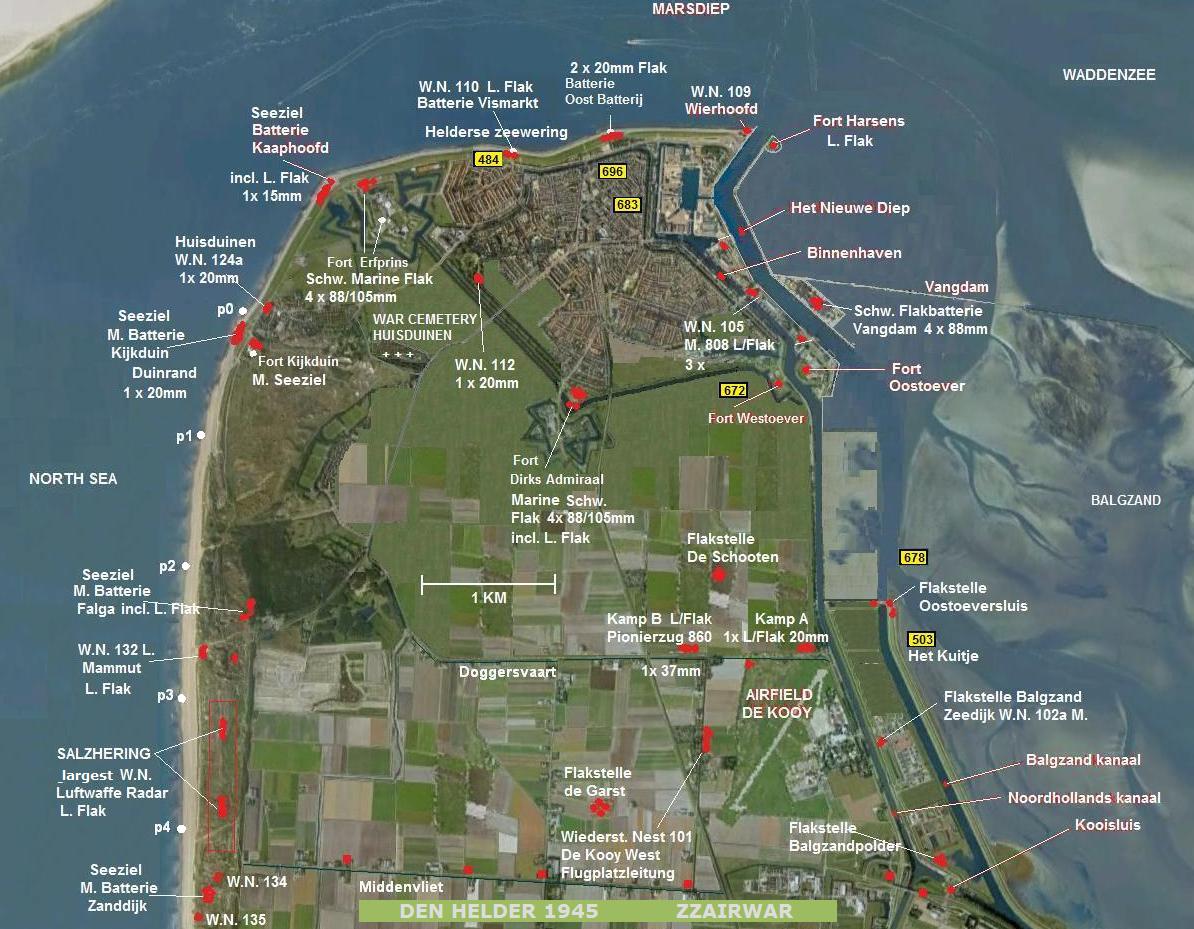
The Huisduinen Cemetery, War Graves Plot in august 1945. 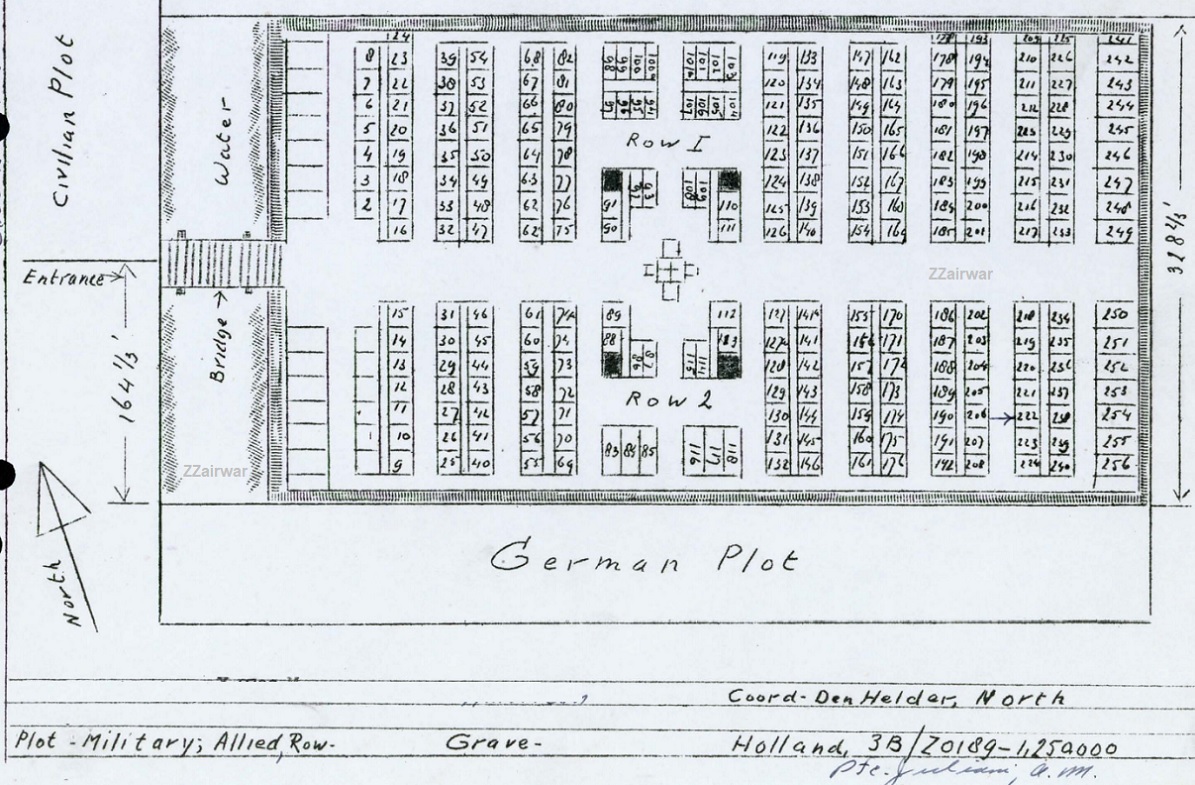
The 4th of July attack 1942
On the 4th of July 1942 a daring air raid took place on Den Helder's airfield "De Kooy". Because of the US independence day and to mark the start of the 8th AF operations in the ETO, General Hap Arnold ordered a (publicity) attack on four German occupied airfields along the Dutch coast (from south to north: airfields "Haamstede", "Valkenburg", "Bergen (aan Zee)" and "De Kooy"). However, no 8th Air Force squadrons in the UK were available yet. Therefore six American light bomber crews of 15th Bomber Squadron USAAF, who were in training with the British RAF, were ordered to join-up for this raid with the experienced RAF 226 Squadron. Each American crew received a RAF Boston Mk.III for the occasion. 226 Sqn added six aircraft with their own crews, which brought the total amount for the attack on twelve: a flight of three aircraft for each target.
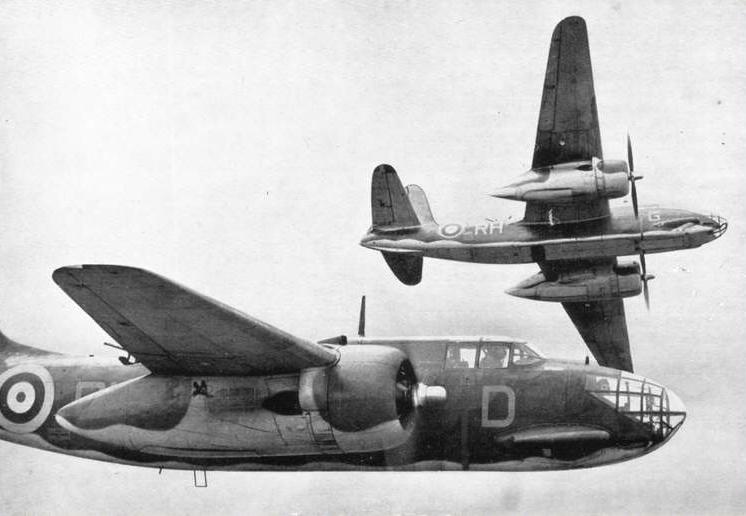
Photo right;
RAF Bostons mk. III, 1941.
Boston mk. III was the English code name for the US-build Douglas DB-7A ("Douglas Bomber-7"). Build 1940 and delivered to the RAF.
A light bomber with crew of 3 or 4 men. Powered with the Pratt & Whitney R-2600 Twin Cyclone (1600 hp-1195 kW).
When the aircraft later came available for the USAAF they named it the A-20 Havoc.
In from the North Sea
The flight to attack airfield "De Kooy" was led by a Boston with English crew. The three aircraft came in very low from the North Sea and entered at Pole 1 (p1, see map above). The alarm had sounded two minutes earlier and the German light Flak gunners were ready. Gun positions 'Falga', 'Duinrand', 'Fort Kijkduin' and 'Fort Westoever' opened-up (see map above). The rear-gunners in the Bostons shot in return on everything they saw. Each aircraft had a rear-camera. The picture below shows they also fired on the old Napoleon-fort Dirks Admiraal. The Germans inside had the morning breakfast on the stove.
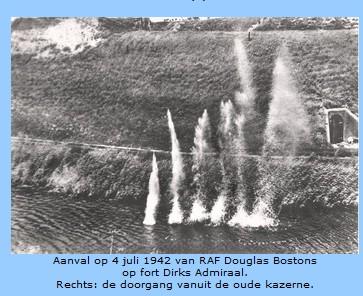
Photo right: shots fired from the Bostons in passing over the earth and grass covered bunkers of fort Dirks Admiraal. The Germans have something cooking (chimney on top).
Boston III, AL677, 2Lt. Frederick A. Loehrl (USAAF) shot down
Seconds after entering the three aircraft started banking south for the airfield and few into the Flak-barrage put up by the units round the field. The cockpit of the second plane (USAAF-crew Lt. Loehrl) was shot off. The plane flew on in fire and crashed a few hundred meters over the dyke on the seawater of the Balgzand, passing over W.N. 102a. At least one crew member came out, but only 2Lt. Marshall D. Draper survived. He could climb out the wreck when it was under water. Wounded he swam and walked to the (mined) shore. German soldiers arrested him. He became the first American 8th Air Force Prisoner of War.
The very strong current caught Sgt. Robert L. Whitham and a week later his body was found 40km (25 miles) up north-east. He was buried in the Dutch sea-port town Harlingen. Pilot 2Lt. Fred A. Loehrl also washed away and is still MIA.
During low tide the wreck of Lt. Loehrl's Boston became visible and three days later the body of gunner Corporal James W. Wright was recovered by the Germans from the wreck and buried in Huisduinen on the 10th of July 1942. At that date already 70 Allied were interred in the Huisduinen War Graves Plot, Sgt. James Wright was the first American. He now rests in US WW2 Centralization Cemetery "Ardennes" in Neupré (Neuville-en-Condroz), Belgium.
Captain Kegelman
The third Boston of the flight was manned by USAAF Captain Charles Kegelman and his crew. Flying next to the other 2 aircraft, his right propeller was shot-off by the 20mm Flak and the engine caught fire. His aircraft was already flying low, but because of the loss of power on this engine, the aircraft dropped to the ground and dragged with its wingtip and tail through the grass. By giving all power to the other engine the plane lifted, flew on and Kegelman dropped his bombs (with 11 seconds time delay fuses) on the airfield and gave a flak tower a burst with his forward set of .303". Whether the bombs exploded is not known. Completing his half circle back to the North Sea at Callantsoog, Kegelman could join his RAF flight leader and together they flew home to base at Swanton Morley.

Awarded
Above picture: a few days before, on June 29th 1942, Kegelman and his crew made the first 8th Air Force air attack on occupied Europe. This was a raid on the Northern France railroad centre at Hazebrouck near Dunkirk. They did this as trainee with British RAF 226 Sqn. On return on the 4th of July raid on Kooy airfield, Captain Kegelman was awarded the D.S.C.-medal. His crew got the D.F.C. Above, from left to right: Sgt. Bennie B. Cunningham, Sgt. Robert L. Golay, Lt. Randall M. Dorton and Captain Charles C. Kegelman, wearing his medal. In his right hand he holds his (English-style) helmet. The Tommy-hat and the sac with gas mask were a mandatory piece of kit on the English airfields in those days, even during a ceremony. On the left, Sgt. Cunningham has laid his helmet down in the grass for a moment.
The attack on Bergen airfield, crash of USAAF crew Lt. William G. Lynn.
The attack on the two most southern airfields Haamstede and Valkenburg didn't led to Allied casualties. But when Kegelmann and Loehrl attacked de Kooy, another flight of 226 Sqn attacked Bergen (aan Zee) airfield, just 30km to the South and on the same coastline. At Bergen the Flak was in a state of alert and waiting for the flight of the three aircraft. The Boston with USAAF crew of 2Lt. William G. Lynn was shot down and exploded on the ground on the airfield terrain, in the North-West corner, near the airfield boundary (photo's of the crash exist). The other men in this aircraft killed were 2Lt. Boyd S. Grant, S/Sgt. W.E. Murphy and gunner Corporal C.P. Kramarewicz. The other two Bostons bombed successfully and rushed back to England, but the Z2213 of RAF P/O Charles Henning did not get far.
Rathenow, Grütz and RAF crew P/O Charles M. Henning.
Because of the early alarm on Bergen airfield, two German pilots ran to their fighters and tried to take off during the attack. Uffz. Hans Rathenow succeeded, but his collegue Uffz. Erwin Grütz was hit by shrapnel of the Boston's exploding bombs. He drove his fighter into a barrack and got killed. The story goes that he was found in the cockpit in his underwear.
Rathenow is then in pursuit of the Bostons over the North Sea. 15 km off Callantsoog he finds one (four Bostons were there at that time). He shoots one Boston down. This was not Templeman's crippled aircraft, but the Z2213 MQ-U with English crew of 226 Sqn. The RAF airmen crashed into the North Sea and were never found. MIA: P/O Charles M. Henning, Sgt. Percey J. Voyzey and Sgt. Herbert T. Willig. They are on the Runnymede memorial.
The balance
In total three Bostons and 12 men (1 POW: 2Lt. Marshall D. Draper) did not return on Swanton Morley after the 4th of July raid, which casted a shadow over Kegelman's award celebration.
On the 6th of July 1942 in total 9 coffins with national flags stood ready for burial at Bergen (aan Zee), Holland. A German soldier behind each coffin was holding a wreath. The four Americans (Lynn's crew) were among the first 8th Air Force men buried in the Netherlands. The coffin of the crashed German fighter pilot Unteroffizier Erwin Grütz stood next to them during the ceremony. On the other side of the row stood four more coffins with dead airmen that crashed in the area on July the 3rd and June 26. They were Australian Pilot Officer P. Sullivan, his English Sgts. W. Adamson and J.A. Eyers and Polish RAF-airman Zygmunt Wieczorek. He was recovered from the wreck of a 18 OTU (PAF) Wellington crashed at Andijk on the Lake coast.
=================================
Sources:
- Book 'Opgegraven Verleden' by Jan Carsjens and Piet Riteco, 2005
- Book 'Vliegveld Bergen NH 1939-1945' by J.H. Schuurman, 2001
- Site History of War.org Rickard, J. The First USAAF crew to attack a target in occupied Europe.
- Site Internet forums on 4th of July 1942
- Site ABMC
- Site www.fortendenhelder.nl
- Site www.303rdbg.com
- ZZairwar research on the war cemeteries in the area and Bergen-op-Zoom 2008.
© ZZairwar